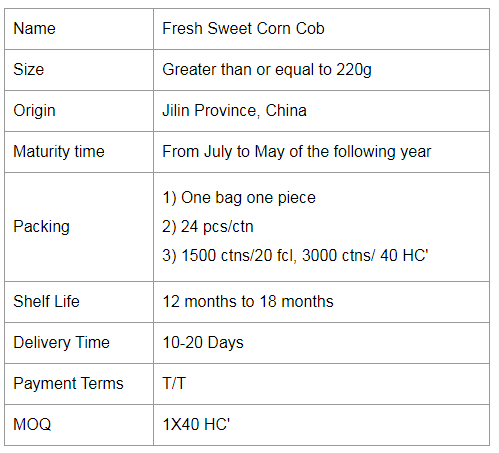A thick banana scent attacked a fruit fly in the darkness, and it was "squeaky" excited and fluttering. The Science and Technology Daily reporter recently visited the Peking University School of Life Sciences and found that researchers are trying to capture the "thinking activity" of the fruit fly that is nailed under the microscope. "We can directly observe that the concentration of dopamine in the brain changes after the fruit flies sense the odor." Zeng Jianzhi, a doctoral student who is doing experiments, said, "I will give it some electrical signal stimulation in a while, and observe the dopamine in the brain in different stimuli." The response below."
The simple picture of “Scenting and Dancing†is complex in the dimension of the “brain map†– the aroma molecules emanating from bananas are captured by the olfactory cells of Drosophila, triggering signal conversion in the olfactory cell pathway, transforming chemical signals into The nerve electrical signal is transmitted to the brain, and the arrival of the electrical signal urges the secretion of dopamine in the body, and the information of the odor molecule in the neural signal is transmitted by opening the intracellular pathway.
Like the "Domino", the external stimuli passed down one by one, stimulating the reaction of the organism. Since the immediate and localized observations of living animal thinking have not been realized for many years, and which part of the brain these reactions actually occur, humans still have no way of knowing. Recently, the new issue of "Cell" magazine published the research results of the team of Li Yulong, a researcher at the School of Life Sciences of Peking University. Through genetic construction, they developed a dopamine fluorescent probe, which is like igniting a "torch" in a deep labyrinth of thought. Such related studies "illuminate" the dopaminergic circuit.
Dynamic tracing of dopamine signal changes
"Combining the fluorescent gene in the jellyfish with the human G-protein coupled receptor (GPCR) gene, we obtained a tool that can dynamically trace dopamine." Li Xiaolong told the Science Daily reporter that this sounds simple, but nerve The characteristics of the activity impose stringent requirements on the probe. Nervous activity is fleeting, it must be responsive; dopamine production may be traces, so it must be sharp; tracer dopamine must be credible and not "mistaken", it must be accurate... only meet these irons The law is qualified to become a widely used research tool.
The "raw material" of the sanding tool is the GPCR that binds to dopamine. "It is a transmembrane protein that triggers its own conformational change after binding to dopamine. We think that if we can make such a change in conception, it can solve the problem." Peking University Life Science, one of the first authors of the paper Dr. Jing Wei of the college explained. This can be roughly compared to the fact that the dopamine "press" button has only opened the door before, and the new tool to be built allows the open door to be lit at the same time.
To this end, the team selected five GPCR subtypes as alternative raw materials. "We used molecular cloning to splicing the gene encoding the fluorescent protein with the genes of the five dopamine receptors, and screening the best subtypes by indexing the expression and location of the fusion protein and the affinity of the receptor for dopamine." Jing Wei said.
Will gene expression after artificial "splicing" be "recognized" by cells? The first barrier to creating an efficient "probe" comes from inside the cell. "A normal GPCR is a membrane protein. To detect the dopamine signal appearing outside the cell, the protein must be membraned. After the fluorescent protein is added, the nature of the GPCR may change and the membrane cannot be applied." Jing said.
Whether the precisely-operated cells can function normally after the "parts" are changed, can the modified new protein "inherit" the original function, and whether the protein assembly after the gene is translated into the amino acid sequence according to the codon principle can reach the cell membrane The tasks that play a role are all in the face of the task force.
Arriving on the membrane is only the first step. "If the GPCR receives the signal molecule, dopamine, the torsion affects the fluorescence of the fluorescent protein, and the connection between the two proteins plays a decisive role." Jing Wei explained, "In some cases, the conformational changes of the receptor may not be effectively transmitted to Fluorescent proteins to produce fluorescence changes."
Know thyself, ever-victorious. Due to the precise understanding of the three-dimensional conformation, core group, and structural force of the GRCR protein, the team of Li Xiaolong's genetic transformation and carving can be just right. Experiments have shown that prolonged expression of the probe has no significant effect on the growth state of the model organism. Using the probe, they detected dopamine release induced by electrical stimulation of mouse brain slices and detected dopamine associated with olfactory stimulation, visual stimulation, learning and memory, and mating behavior in the brains of living Drosophila, zebrafish, and mice. Signal changes.
Excellence, probe sensitivity continues to “evolveâ€
“People may never know that there is a nerve signal release, but if there is a very sensitive probe, they may see it.†Jing Wei said that after the article was received, the team was always working on the optimization of the probe. The needle is more sensitive than in the paper.
If the human brain is likened to a contact map, what scientists want to do is to look at the details of the corresponding neural activities such as memory and emotions. The clarity of the future picture, whether it is snowflake, current saving, SD, HD or 1080P, depends entirely on the sensitivity of the probe.
After breaking through the first obstacle, the probe ushered in a "cultivation" optimization. "We know that we want to link the genes of fluorescent proteins with specific GPCR genes, but how can we optimize them?" Jing Wei said that if you want to add a bridge to the left or right, you may need to add a bridge in the middle. How to design a bridge, there are countless ways to arrange and combine.
"We have achieved a probe optimization effect by finding some sites that play a key role in the reaction between the probe and dopamine, and obtained the effect of probe optimization." Well, the results of the mutations in the experiment may be good or bad. After the mutation, the reaction with dopamine will be tested, and the "improved version" will be screened. These "improved versions" will then be combined and tried, continuously screened and optimized, and "evolved" toward higher sensitivity. After more than 500 mutation attempts, the team finally obtained two versions of probes with high and low affinity for brain regions with different amounts of dopamine release.
Li Xiaolong believes that probe sensitivity will continue to improve in the future optimization and screening, making it capable of tracing more unknown neural pathways and discovering neurological secrets that humans have not observed and are not aware of.
Capture nerve activity from "flicker" to "colorful"
Since neurons emit a transient peak of calcium concentration during discharge, neuronal calcium ion imaging is still the most direct means of observing neural activity. "Although calcium ion imaging can simultaneously reflect hundreds of neuronal activities, many neurotransmitters can trigger changes in intracellular calcium signaling, so it is difficult to know which neurotransmitters are acting by calcium imaging alone. "Jing Wei said.
According to an article, with the calcium imaging technology, the originally silent nerve activity becomes a flashing spectacular image. However, this "full bloom" imaging method is difficult to "fix" and "qualitative" reactions.
"Is the excitatory change of neurons toxic to dopamine? Is it a certain neuronal cell that secretes dopamine at all times, or does it secrete different concentrations of dopamine in stages? Is it the activity of an entire neuronal cell, or is it different in a neuronal cell? Touching the activity? Answering these questions will make it possible to clarify the pathology of some neurological diseases and develop drugs in a targeted manner," Li said.
If the calcium ion imaging technology solves the problem that scientists can finally "visit" the neural signals in the neural network, then the dopamine fluorescent probe technology solves the corresponding relationship between the "sniping" neural signals and reality.
At the same time, the Li Xiaolong team successfully developed the sensitive, specific, and heritable coding of acetylcholine fluorescent probes for the first time, and successfully detected endogenous acetylcholine signals in real time in different biological systems. Related papers have been published in the journal Nature and Biotechnology. Published. It is conceivable that when each neurotransmitter has a probe of a different color, the neural activity will change from the previous "flicker" to "colorful", with different colors representing different neural activities. With the tools of pickpockets, people will take a big step in the study of the “brain mapâ€. (Reporter Zhang Jiaxing)
Source: Technology Daily
Fresh Single Packed Sweet Corn
Jilin Province Agricultural Sister-in-law Food Co., Ltd. was established in 2012 and has been in the export business since 2012. We mainly export to 16 countries all over the world.
About our main product - Corn
Corn is a kind of food that is often encountered in daily life, and it is also a kind of food to supplement the diet. Its edible benefits are as follows:
1. The fiber content of a cup of corn is 18.4% of the recommended daily amount. This helps reduce digestive problems such as constipation and hemorrhoids.
2. Corn is rich in minerals, which are beneficial to the human body in many ways.
3. Corn is a rich source of calories and is the main food in the diet of many people. The caloric content of corn is 342 calories per 100 grams, which is the highest among grains.
4. The health benefits of corn include controlling diabetes, preventing heart disease, and reducing high blood pressure.
5. Contain a lot of vitamin B group, vitamin B is called happiness factor in medicine, so eating corn can improve depression.
6. Corn not only provides necessary calories for healthy daily metabolism, but also a rich source of vitamin A, vitamin E and many minerals



If you have any questions, please contact us directly. If you have any questions, please email us directly.
Sweet Corn Cob,Yellow Sweet Corn,Sweet Corn,Fresh Corn On Cob
Jilin Province Argricultural Sister-in-law Food Co., Ltd. , https://www.nongsaocorns.com